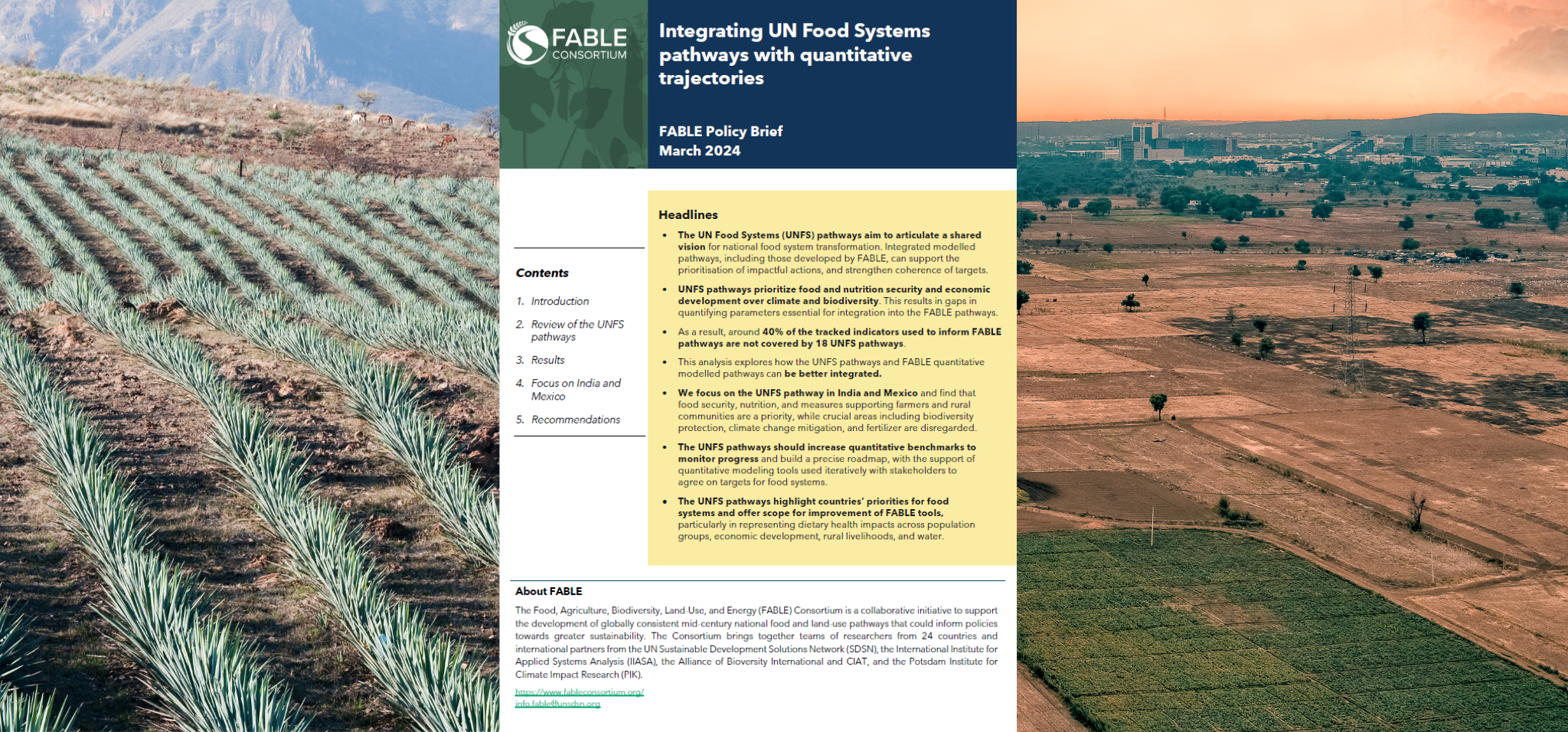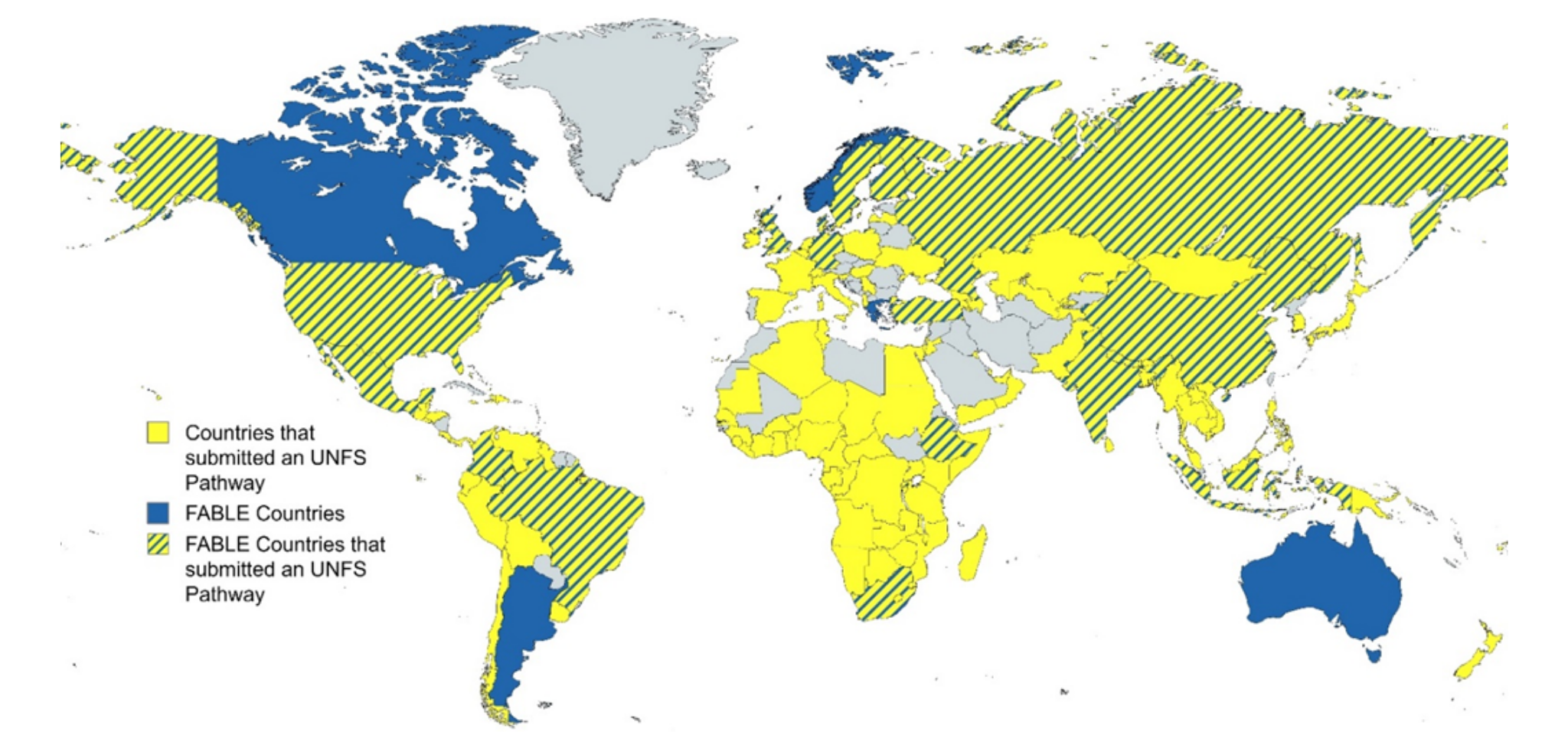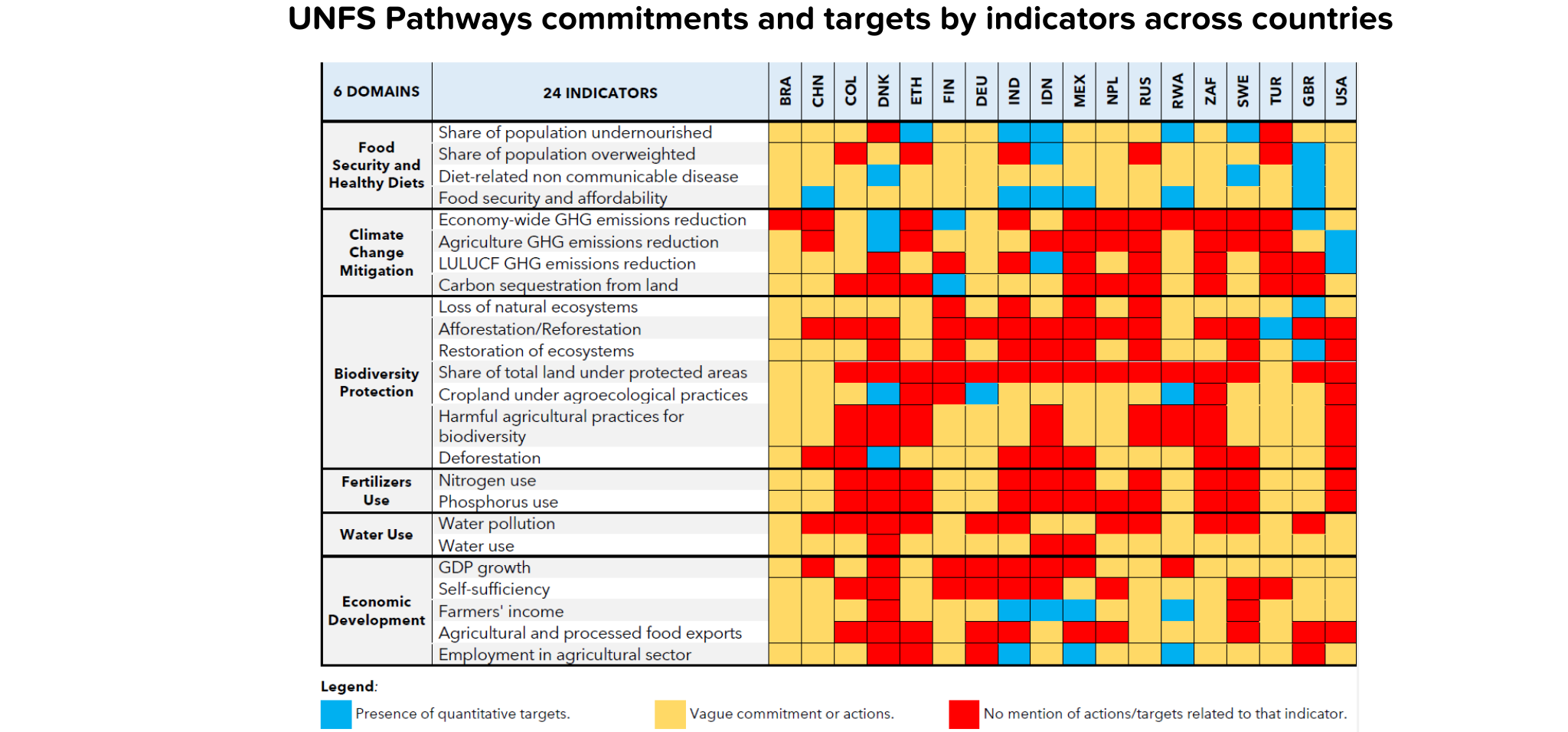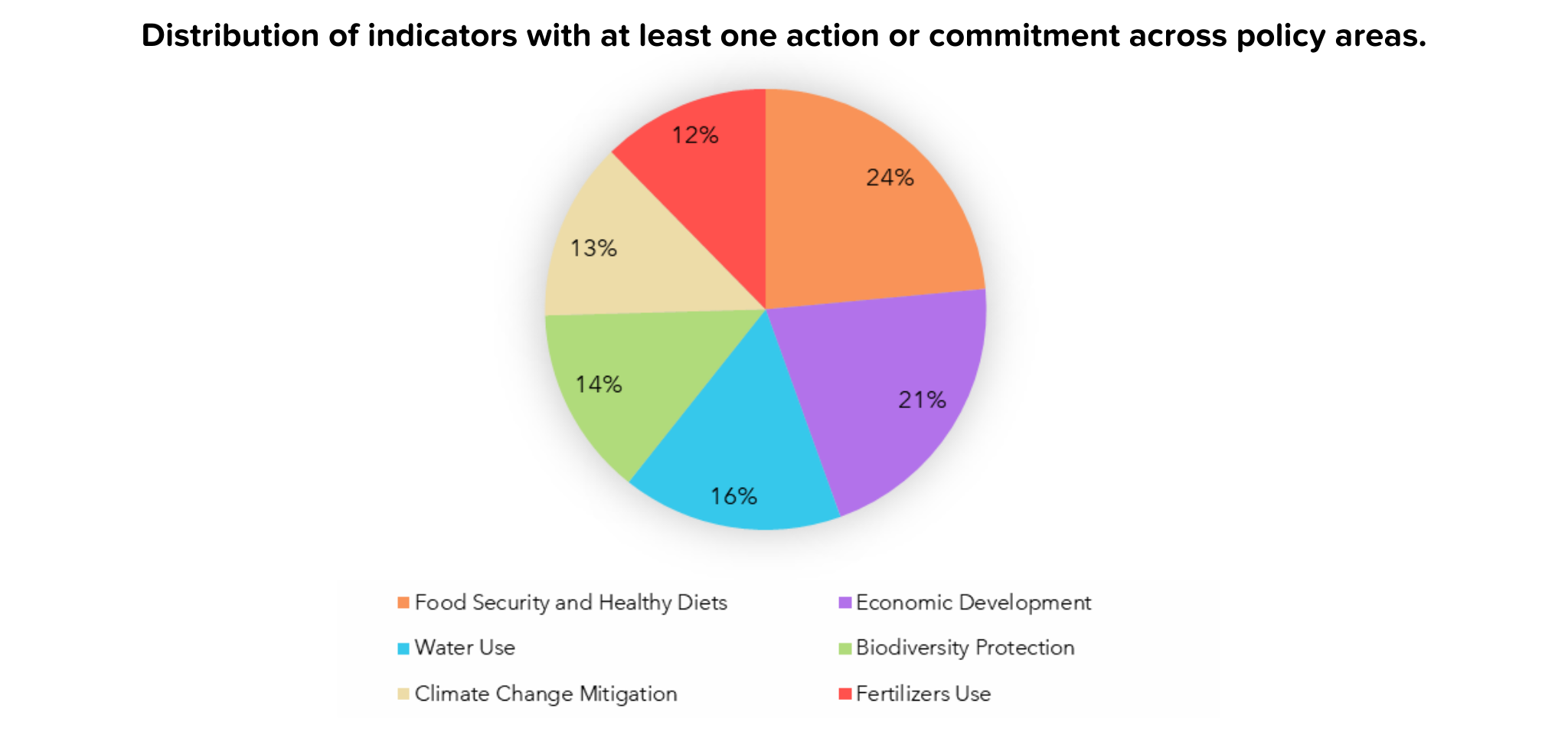
Author: Maria Diaz (SDSN) and Davide Cozza (SDSN).
In September 2021, the UN Secretary-General convened the Food Systems Summit (UNFSS) to promote political and societal engagement in addressing food system challenges and expediting national implementation. Member States conducted multi-stakeholder dialogues to formulate strategies for sustainable food systems, leading to the development of UNFS National Pathways aimed at providing countries with a framework to articulate their vision for food systems.
In the brief Integrating UN Food Systems Pathways with quantitative trajectories, we analyzed the quantitative nature of the actions and objectives outlined in the UNFS pathways for 18 countries and reviewed them along six domains of food systems and 24 indicators used to build FABLE pathways. Through this analysis, we show how integrated modelled pathways can support the prioritisation of policies and actions, strengthen their actionability, guide target setting, and enhance progress monitoring.

The FABLE Consortium covers 24 countries. By May 2023, only 18 represented in FABLE submitted UNFS pathways (Brazil, China, Colombia, Denmark, Ethiopia, Finland, Germany, India, Indonesia, Mexico, Nepal, Rwanda, Russia, South Africa, Sweden, Türkiye, the United Kingdom, and the United States). Argentina, Australia, Canada, Greece, and Norway did not submit a UNFS pathway.
Modelling UNFS pathways with FABLE quantitative tools: Key findings.
Close to half of the actions and commitments across 18 countries focus on food security, nutrition, and rural support, while neglecting critical areas such as climate change mitigation and biodiversity protection. About 40% of tracked indicators are not addressed in these pathways. This diversity in prioritization underscores the unique challenges and contexts across regions. However, it also shows that countries need to consider climate action and biodiversity to achieve resilient and sustainable food systems.

Quantitative targets were notably absent from the majority of UNFS pathways, posing a challenge for their quantification with modeling tools. Only 15% of the indicators that include at least one action or objective include a quantitative target, such as aiming to achieve 30% of agricultural land farmed organically by 2030 or ending stunting in children under 2 by 2030. These results show opportunities for integration between UNFS pathways and quantitative modeling exercises that can strengthen their coherence with existing policies and strategies, and support local implementation.
While UNFS pathways shed light on countries' food system priorities, they also pinpoint areas where FABLE tools need enhancement, especially in depicting dietary health impacts, economic development, rural livelihoods, and water management.. Through two country cases, India and Mexico, we demonstrate how UNFS pathways were modeled using the FABLE Calculator and MAgPIE, and how FABLE quantitative pathways can be enhanced by the UNFS documents. We identified several areas for improvement for both pathways and propose recommendations to strengthen both approaches..

Recommendations to enhance UNFS pathways and FABLE tools
The modeling of the UNFS pathways has revealed the priorities set by countries for their food systems and highlighted areas where FABLE modeling tools need development. This analytical exercise shows areas where the FABLE Calculator could better reflect country's priorities for their food systems, particularly in measures targeted to population groups, health outcomes, economic support to farmers, and irrigation measures. FABLE Consortium members will continue to collaborate to enhance the Calculator for a more accurate depiction of food system complexities.
The UNFS pathways require stronger benchmarks that can be monitored with quantitative tools, such as the FABLE pathways. The UNFS pathways need to include a higher number of targets and quantitative benchmarks to become effective tools that guide operationalization at the sectoral and sub-national levels. The use of quantitative modeling tools iteratively with stakeholders at the UNFS Summit dialogues could offer a pragmatic solution to address the current absence of quantitative benchmarks in the UNFS pathways.
The UNFS pathways can serve as a platform to develop targets on climate change mitigation, adaptation, and biodiversity protection for food systems. The UNFS could include specific actions to halt biodiversity loss driven by agriculture, and build on targets from the National Biodiversity Strategies and Action Plans (NBSAPs) and the Kunming-Montreal Global Biodiversity Framework. For climate action, the UNFS pathways could function as a platform for food system stakeholders to collaboratively deliberate and reach a consensus on an emission reduction target tailored to the agricultural and land-use sector. This target should be suitable for their AFOLU context and consistent with the 1.5C threshold set in the Paris Agreement mitigation target, and other food system goals.
Taking into account trade spillovers is crucial for both FABLE and UNFS pathways. Globally, agricultural supply chains contribute significantly to spillover effects such as deforestation and water scarcity. FABLE tools currently incorporate trade assumptions to maintain global consistency across national pathways and will further include bilateral trade flows to depict spillovers more accurately in the future. These enhancements and findings could inform future versions of UNFS pathways by illustrating how certain actions in one country can affect food and land use systems in other countries.
 {.image-center100}
{.image-center100}